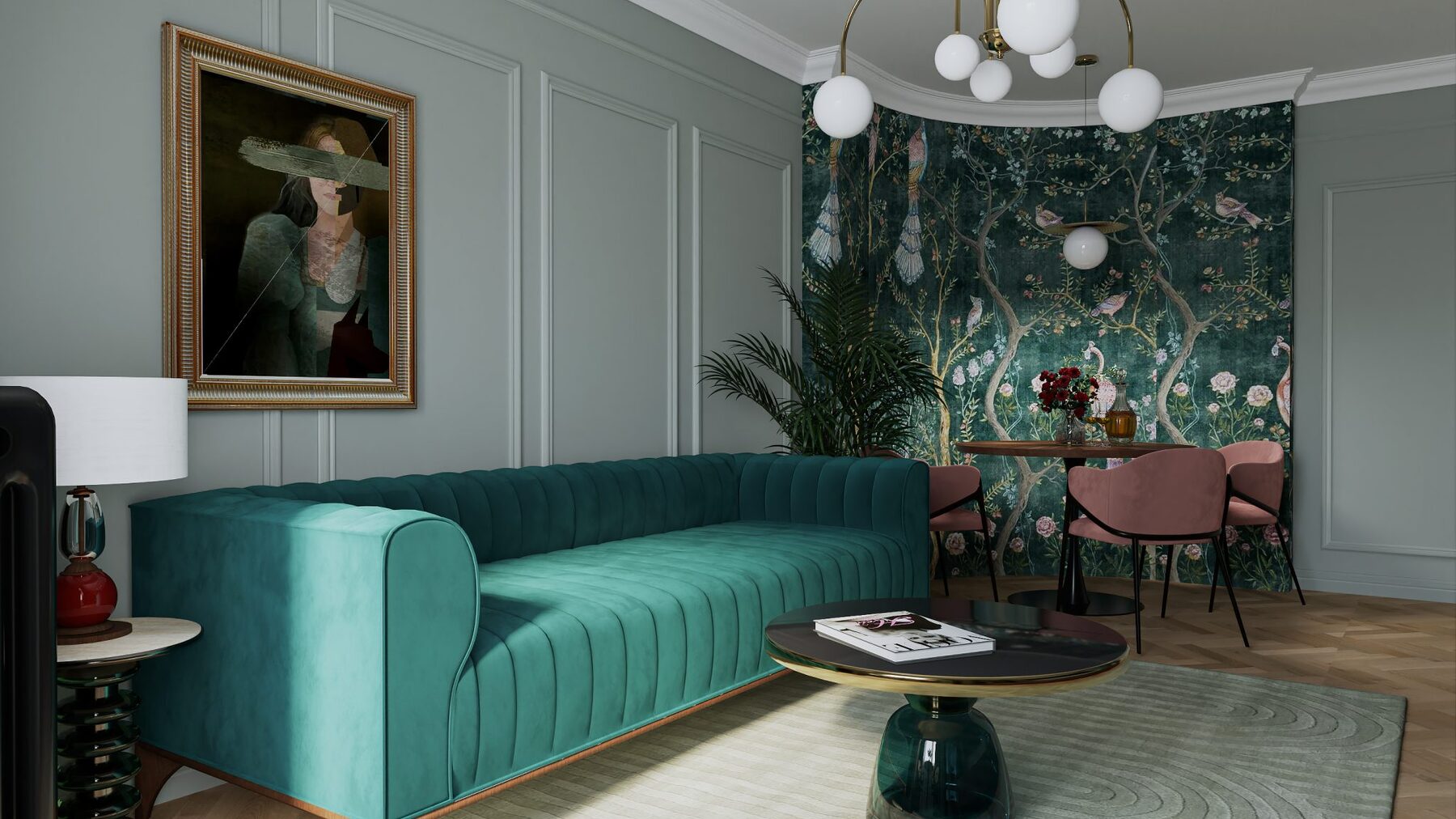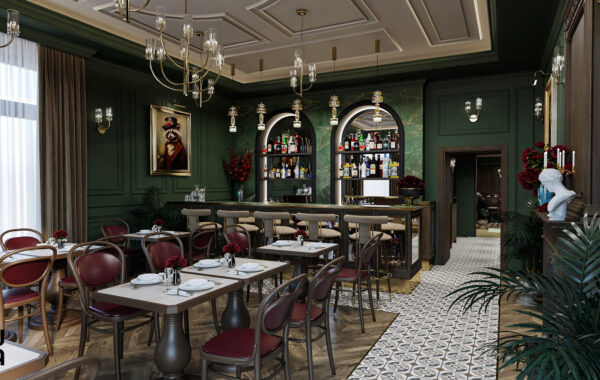Eclecticism in interior design is a rich, layered style that synthesizes multiple influences, creating spaces that feel both cohesive and diverse. This design philosophy has evolved over centuries, beginning as a rebellion against rigid, traditional styles and developing into an approach that allows designers to create spaces uniquely expressive of personal taste. The foundation of eclecticism lies in its ability to harmonize contrast, allowing disparate styles, textures, and colors to coexist seamlessly. Unlike random assortment, eclectic design is highly curated and thoughtful, blending varied elements into a cohesive, personalized narrative.
Historically, eclecticism in interior design emerged during the 19th century as architects sought to break free from the constraints of singular styles. During this period, architects began drawing elements from multiple design languages—incorporating Gothic, Baroque, and Renaissance motifs into single spaces. This departure from traditional stylistic purity allowed for more personalized and context-sensitive spaces, reflecting the global influences that were increasingly accessible through trade and cultural exchange. Victorian-era eclectic interiors, for instance, often combined European and Eastern elements, using ornate moldings, rich textiles, and layered patterns. The style became a means to reflect the diverse tastes and worldly interests of its inhabitants, transforming spaces into reflections of cultural curiosity and personal journeys.
In contemporary interiors, eclecticism continues to evolve, with designers drawing inspiration from an even wider range of sources. Today, eclecticism thrives on a sophisticated balance between contrast and unity, achieved by establishing a core theme or color palette that harmonizes different styles within a room.
For example, the living room featured in the interior design by Tiuga Studio demonstrates a masterful use of eclectic balance. The rich, jewel-toned green velvet sofa serves as an anchor, providing continuity in a space that includes both modern and classical elements. Beside the sofa, soft pink dining chairs add warmth and contrast, while a dark floral wallpaper brings a sense of historic grandeur to the background. Together, these elements showcase how eclecticism is both curated and deliberate, using color as a unifying element to maintain cohesion.
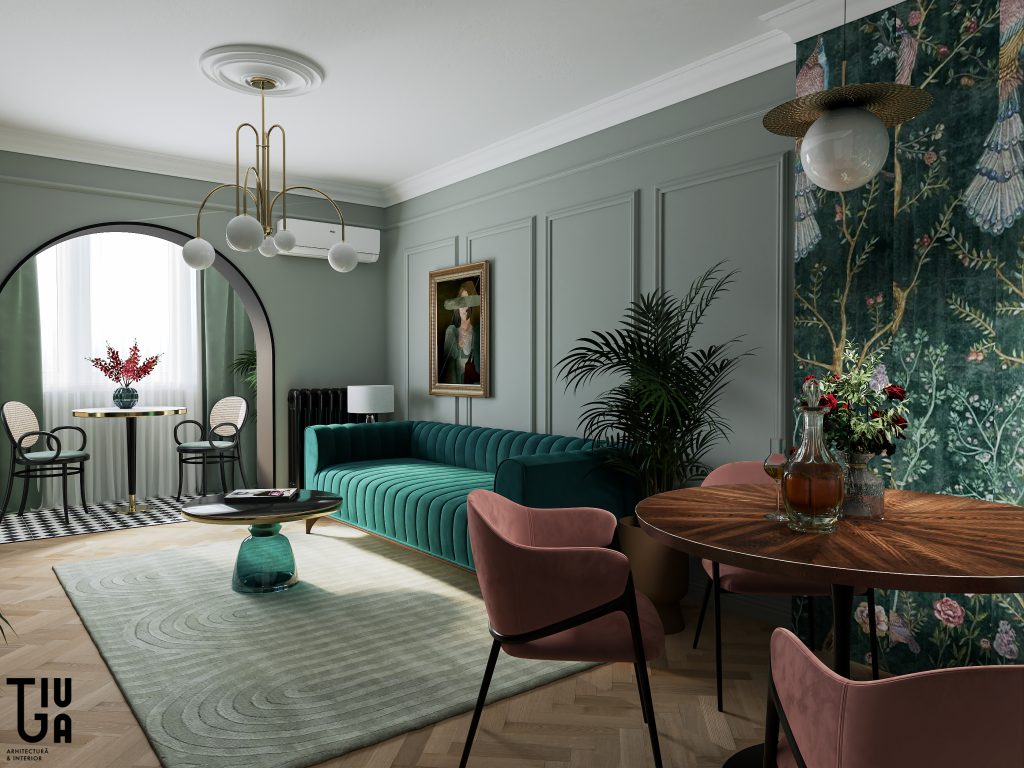
Texture and pattern are equally significant in achieving the layered, tactile richness characteristic of eclectic interiors. This approach is evident in another room with a patterned wallpaper featuring exotic birds and botanical elements, creating a vibrant, almost immersive experience. Here, the wallpaper acts as a bridge, linking modern furniture with nature-inspired decor and historical motifs. In another corner, a reading nook with black-and-white checkered flooring and arched entryway adds an architectural contrast to the space, juxtaposing clean modernity with vintage charm. These choices reflect the depth of eclecticism, where textures and patterns work together to create spaces that feel dynamic, inviting exploration and engagement.
Color plays a pivotal role in eclectic interiors, serving as both a unifying and contrasting element. Unlike minimalistic spaces that rely on a restrained palette, eclectic interiors embrace a more adventurous approach to color.
For instance, in the bedroom design, a soft green headboard is set against a wall adorned with a crane motif wallpaper. The wallpaper’s delicate colors bring together the room’s different shades of green and earthy accents, while a deep red throw introduces warmth and visual interest, balancing the cooler hues. This sophisticated use of color allows eclectic spaces to feel both vibrant and harmonious, as each hue adds depth and intention to the overall design.
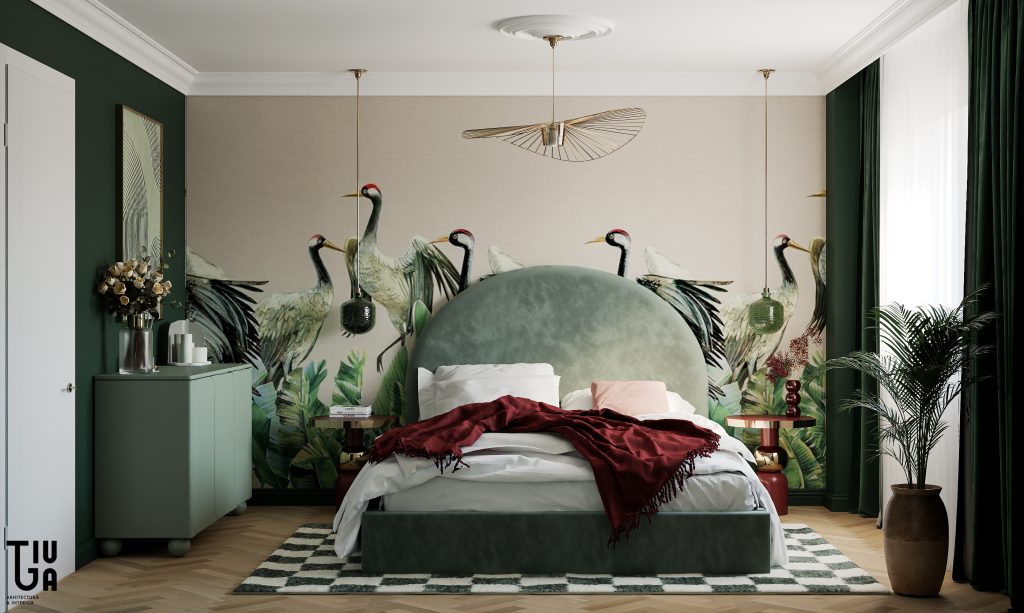
Architectural elements often serve as the backbone of eclectic interiors, providing a structured framework that supports stylistic contrasts. Traditional details like moldings and arches can ground a space in history, giving it a sense of permanence and continuity. In Tiuga’s interior, a grand arch divides the living room from a cozy dining area, lending a sense of formality and grandeur to an otherwise contemporary layout. This architectural choice invites a dialogue between the room’s modern furniture and its classical features, reflecting the nuanced layering that is central to eclecticism. The crown moldings and wall paneling add further structure, allowing for a sophisticated interaction between old and new that is both engaging and cohesive.
Furniture and decor in eclectic spaces are curated with a focus on individuality, each piece chosen for its distinct style and contribution to the space’s broader narrative. Unlike spaces designed with a single aesthetic, eclectic interiors invite diverse furnishings that reflect multiple influences.
In the living room’s design, a round, glass-topped coffee table with brass accents introduces a modern touch amidst more classic decor, like the ornate wall art and floral arrangements. The round dining table, surrounded by blush velvet chairs, adds another layer of elegance and texture, creating a focal point that is both functional and stylistically versatile. Each piece—whether a vintage portrait, a statement light fixture, or a minimalist shelving unit—is selected to enhance the room’s depth and individuality, making the space feel like a living gallery.
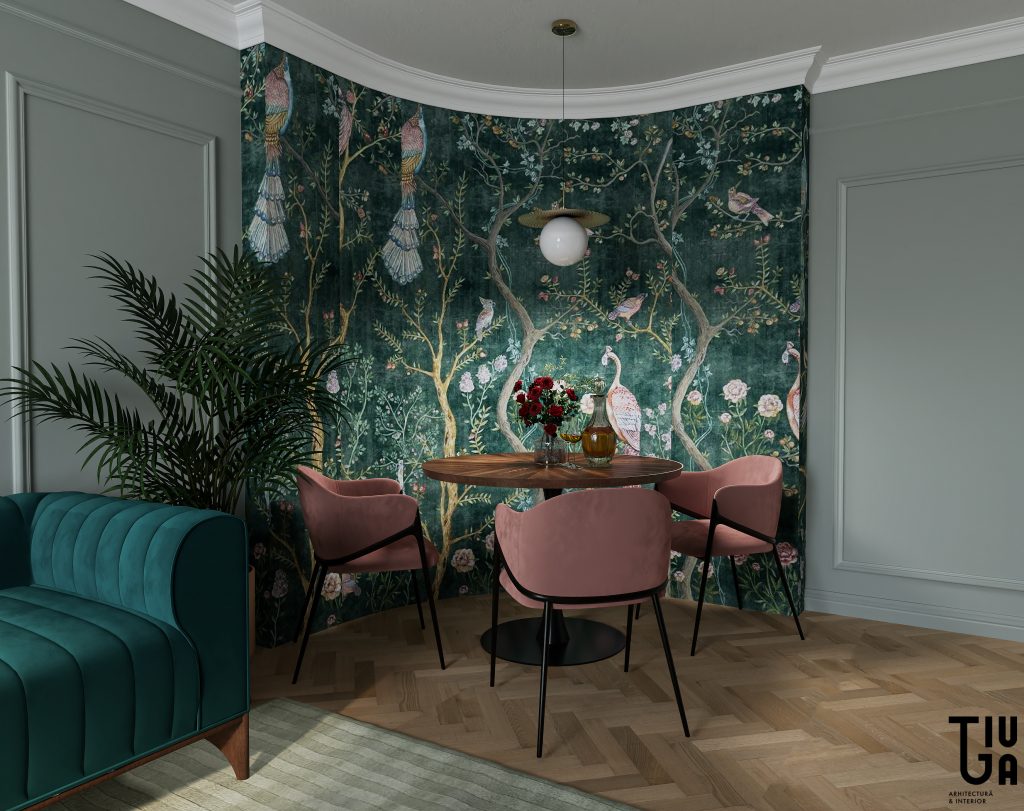
Lighting, often varied in eclectic interiors, plays a critical role in setting the mood and highlighting architectural and decor details. Layered lighting, with a mix of chandeliers, wall sconces, and accent lights, adds a sense of depth and dimension. A brass chandelier, for instance, might hang in the dining area, casting a warm glow that enhances the room’s intimate atmosphere and draws attention to the intricate wallpaper behind. In the bathroom’s interior design, a single pendant light and a rich burgundy color scheme create an intimate, luxurious atmosphere, emphasizing the contrast between the lush green vanity and the botanical-themed wallpaper. Lighting choices in eclectic spaces are as diverse as the decor, with each fixture adding to the room’s layered story.
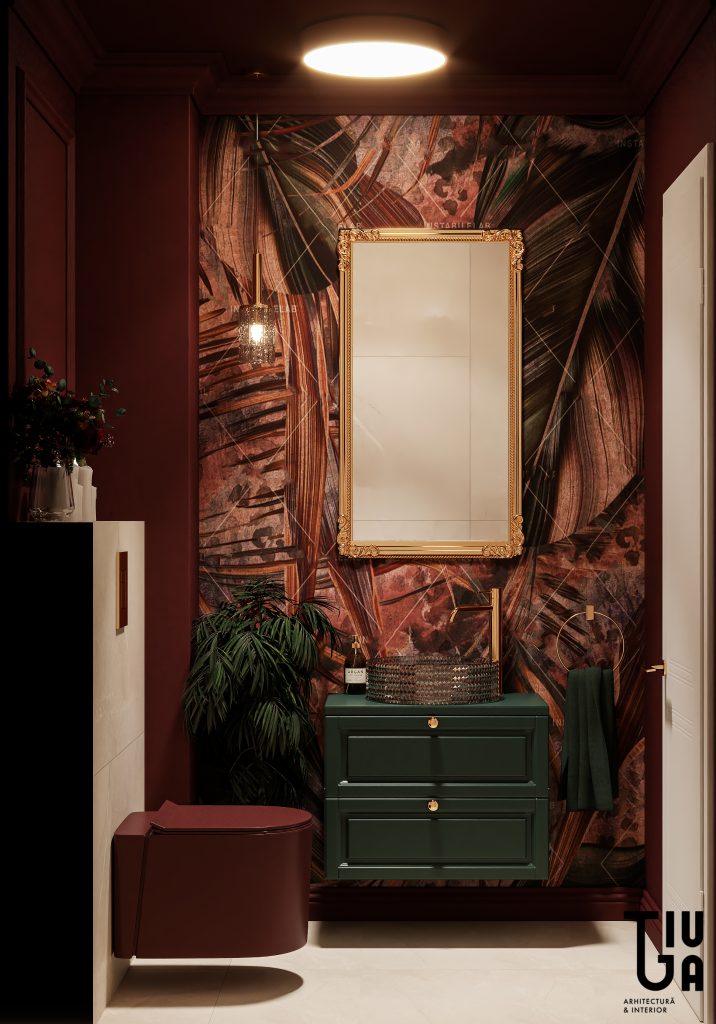
In today’s design world, eclecticism is not merely a trend but a philosophy that celebrates diversity, complexity, and personalization. Modern designers implement this style by carefully balancing varied elements, creating a harmony that feels both curated and dynamic. Eclectic interiors allow for expression and individuality, reflecting the global influences and personal histories of their inhabitants. This approach to interior design is about breaking boundaries, blending disparate elements into a cohesive narrative, and transforming spaces into meaningful, multi-dimensional environments.
Ultimately, eclecticism in interior design is about creating spaces that reflect a rich tapestry of influences, perspectives, and personal histories. It allows designers to move beyond prescriptive styles, drawing inspiration from a wide array of sources and reinterpreting them within a cohesive, personalized context. An eclectic space is never static; it evolves over time, as new elements are added and existing pieces find new roles within the space. This approach transforms interiors into dynamic, meaningful environments that capture the complexity of individual expression. Eclecticism is more than a design trend—it’s a philosophy that celebrates individuality, values diversity, and creates spaces that are as intricate and layered as the people who inhabit them.


